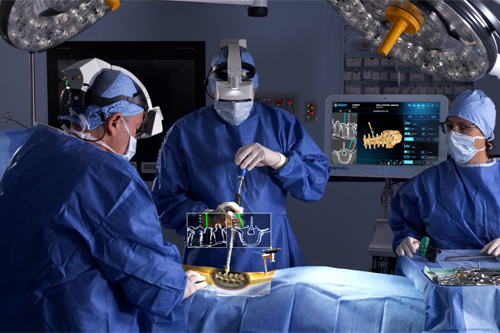
Some causes of back pain can be alleviated by a Nagpur spinal surgery, but it is usually not the first step. Thus, Most cases of back pain also resolve spontaneously within three months without needing surgery.
Back pain causes frequent visits to healthcare providers. First treatments may include anti-inflammatory drugs, heat and cold application, and physical therapy.
The physician will first try a variety of non-surgical treatments to alleviate the symptoms, including low back pain or weakness in the lower body, before choosing to pursue back surgery. There are many other alternatives besides surgery, and it’s not guaranteed to rid you of the problem once and for all. The more you learn about back surgery before the operation, the better prepared you will be to make the necessary decisions.
Types of back surgery
There are various kinds of back surgery. A few of these types include:
- Diskectomy: Since, This type of a surgery usually involves the removal of the herniated portion of a disk.
- Laminectomy: So, Therefore, this surgery involves removing some of the bone at the posterior of the spine to provide more space for the spinal cord and nerves.
- Spinal Fusion: First of all, arthritic joints during spinal fusion is removed and metal implants may be used to join permanently two or more bones of the spine.
Formerly, These devices made of plastic and metal can be used in order to replace a damaged cushion between two spinal bones.
Common Conditions Treated with Spine Surgery:
- Herniated or bulging discs: When the discs between the vertebrae bulge or rupture, causing pain and nerve compression.
- Spinal stenosis: Narrowing of a spinal canal, putting pressure on a spinal cord or nerves.
- Spondylolisthesis: A condition where one vertebra slips over another, causing back pain and nerve issues.
- Degenerative disc disease: Age-related changes in spinal discs can lead to the chronic pain.
- Fractures: Caused by accidents or osteoporosis, leading to spinal instability.
- Scoliosis: A curvature of the spine, which may require surgical correction in severe cases.
Types of Spine Surgery:
- Discectomy: Removal of part or all of a damaged disc to relieve nerve pressure.
- Laminectomy: Removal of the lamina (part of the vertebra) to relieve pressure on the spinal cord or nerves.
- Spinal fusion: Fusing two and more vertebrae together to stabilize the spine or reduce pain.
- Vertebroplasty and Kyphoplasty: Minimally invasive procedures to repair compression fractures using bone cement.
- Artificial disc replacement: Replacing the damaged spinal disc with an artificial one to a maintain spine mobility.
Risks of Spine Surgery:
Spine surgery carries certain risks, including:
- Infection
- Nerve damage
- Blood clots
- Failure to relieve symptoms
- Spinal instability
Minimally Invasive Spine Surgery:
Many spine surgeries are now performed using minimally invasive techniques, leading to faster recovery, less pain, and smaller scars. These techniques involve smaller incisions and the use of special tools like endoscopes and cameras to reduce tissue damage.
What Are the Benefits?
Often, the benefit is far greater than that of merely relieving pain. Among other things you should expect:
- Better mobility, flexibility.
- More physical fitness and muscular endurance.
- Elevation of the mood and affective well-being.
- Low usage of pain medications.
- Ability to Return to a Work Productivity or efficiency in the workplace will improve.
At our Neurosys Multispeciality Center, we perform several key procedures including Craniotomy, which is primarily for the excision of brain tumors; V-P Shunt Surgery for treating hydrocephalus; surgeries for epilepsy; and operations targeting brain stem glioma. Beyond these, we offer a range of other neurosurgical services. If you have any questions that are not answere, please contact us through our Contact Us or Book your Appointment.
